Week #18, “Midseason” review
- On: September 21, 2022
 0
0
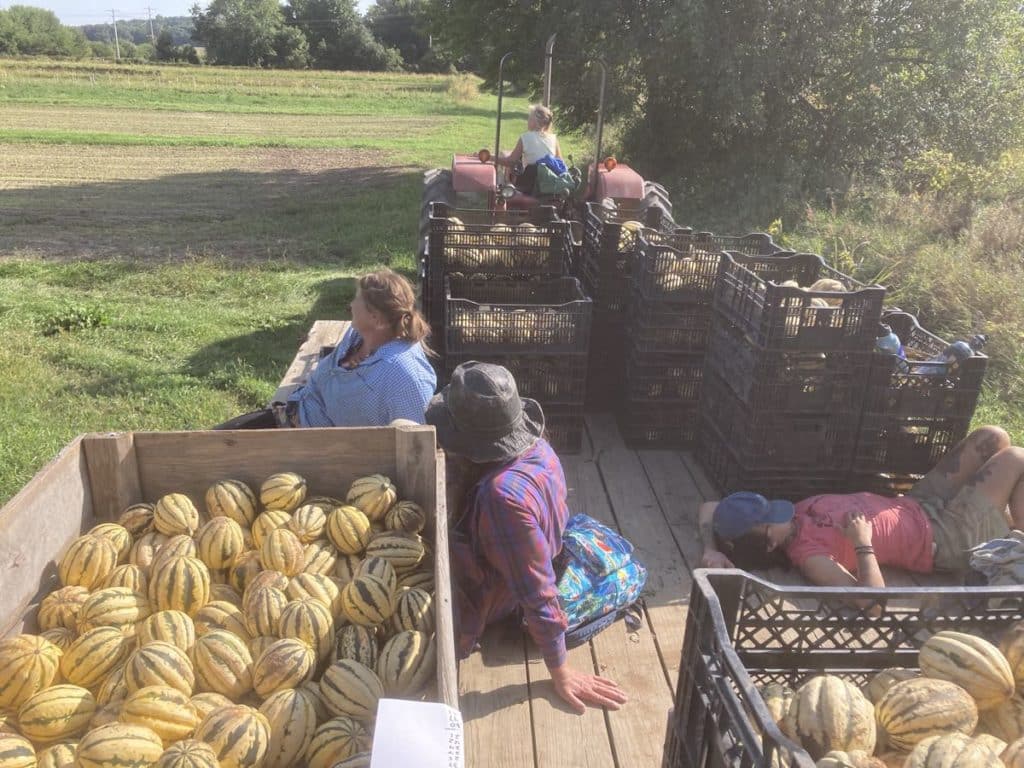
Bringing a load of winter squash from the field on a lovely fall afternoon.
Most years, we offer a midseason review to answer questions and share how the farm is faring. Dang, we sped right past the August 11 midpoint this year, distracted by a few things.
Our thoughts:
It’s been a very good growing season so far. It started too dry for our taste, forcing Steve to work around-the-clock on irrigation. Still, a dry spring and early summer establishes healthy crops with less disease. Now we are getting steady rain and our fall and winter crops are growing nicely.
Melons were the absolute low point of the year, succumbing to a disease called anthracnose. We lost three quarters of our crop, never harvesting a single melon from our third field. We’ve seen this disease before, but always as a minor, late season problem. This will get winter attention and research. We are sad that we had fewer melons for you this year, but it was out of our hands.
High points of the season so far include abundant and luscious sweet corn, cucumbers, peppers and better-than-usual tomatoes. Many crops have done well, but these ones stand out. We’ll have tomatoes for you for a few more weeks (in smaller quantities) but their season will end soon. Peppers will continue longer, assuming we protect the plants from frost. All the fall crops are doing well so there will be lots of tasty options each week.
Now, let’s respond to member questions and comments.
Q: I am sorry to hear that you are short-handed this year.
A: Actually, we have a full crew now! It took a while, with stops and starts as we hired in spring and again in midsummer. We were definitely short-handed earlier in the year. That was hard. Fortunately, we have ended up with a terrific crew. Each person we hired is charming in their own way. It’s been a peaceful and fun summer with them. I’ll write again soon with more details about who is working for us this season.
Hiring has been a strange process this year. Between people yelling at me about COVID during phone interviews to new employees ghosting us on their first day, it has been odd. Honestly, who accepts a job then quits the day they are scheduled to begin work?? Obviously, hiring has been a widespread problem for many employers. In this environment, we feel lucky and grateful to have put together such a great crew.
Q: Will there be eggplant in the boxes?
A: Sadly, our eggplant crop was a complete failure, decimated by bugs early and repeatedly. We will plant again next year.
Q: What about broccoli?
A: Broccoli will be in the CSA boxes soon. The plants look great. Heads have formed and harvests should begin in the next two weeks. Cauliflower heads are forming too and will be ready in October.
Q: We missed the berry and tomato u-picks. Will there be more chances to visit the farm?
A: Watch for emails from us!
Q: How is everyone’s health?
A: We are all doing fine, recovered/recovering from surgery and aware that Steve, Sophie and I are beneficiaries of modern medicine this summer. We are back to normal and grateful for that. Thank you for your patience during my recovery, and for your sweet emails and notes. I know there were delays in answering emails. If there’s anything I missed, please send an email again.
Thank you for reading!
Beth
Veggie List & Veggie Notes
Week #18, Sept 22/23, 2022
– Weekly shares
– EOW/ purple
– Sampler/ sun
Bok choy
Romano beans, 0.8 – 0.9 lb
Acorn winter squash, 2
Slicing tomatoes, ~4 lb
Cherry tomatoes, 1 pint
Mixed bell & frying peppers
Red onion
Jalapeño chile (HOT), 1
Basil, 1 bunch
Korean Red garlic, 1 bulb
Next week’s box will probably contain Romano beans, winter squash, fall greens, peppers, tomatoes and more.
Bok choy (rosette with thick white stems and green leaves) – This Asian green is good for stir-frying or sautéing or in soup. You can think of the stems and leaves as two separate vegetables. The stems require longer cooking. The leaves will cook almost as quickly as spinach. Bok choy stores well, so feel free to pull off leaves as you need them, or use the whole head at once.
Storage: Refrigerate in a plastic bag or other container.
Romano beans – Romano beans are more robust and meaty than green beans. They are excellent raw but really shine when gently cooked for a long time. Here’s a pep talk from Tipi member Steve Rankin:
“You have finally sold me. I have never been a fan of Romano beans. This week I have been sautéing them with various peppers, garlic and oregano. They are especially tasty with poblanos. Lots of black pepper and some soy sauce, which makes the pan sticky. I deglaze the pan with wine and braise them in the wine. I’m sold!”
Acorn winter squash – You will receive squash of one or two of these acorn varieties: ‘Carnival’ or ‘Heart of Gold’ or ‘Starry Night’. All are cured, ready to eat, and tasty. Eat within two weeks, as they will decline after that. Acorn squash are not meant for storage of any length. Plus, we will be sending more next week! Skins of these types are not edible. It’s best to cook the squash, then remove the skins, eg by scooping while eating. It’s difficult to peel these types while raw because of their ridges.
Storage: Store at room temperature for two weeks but keep an eye on your squash and cook promptly if they start to deteriorate.
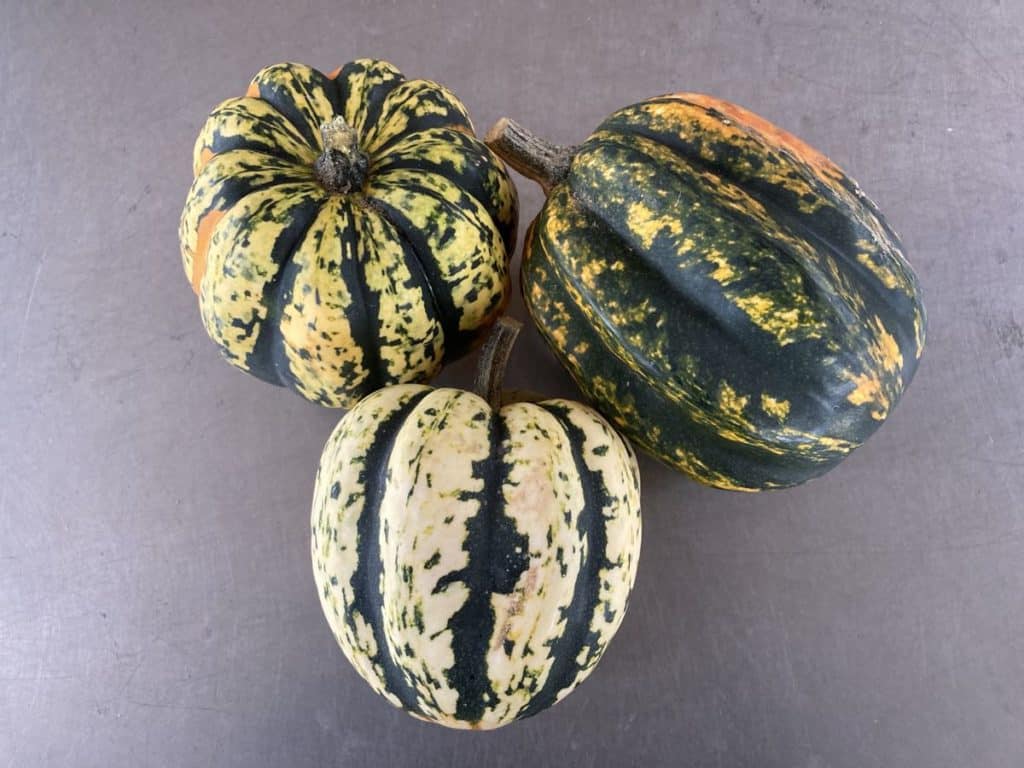
Clockwise from top left; Carnival, Starry Night, Heart of Gold
RECIPES by DEB
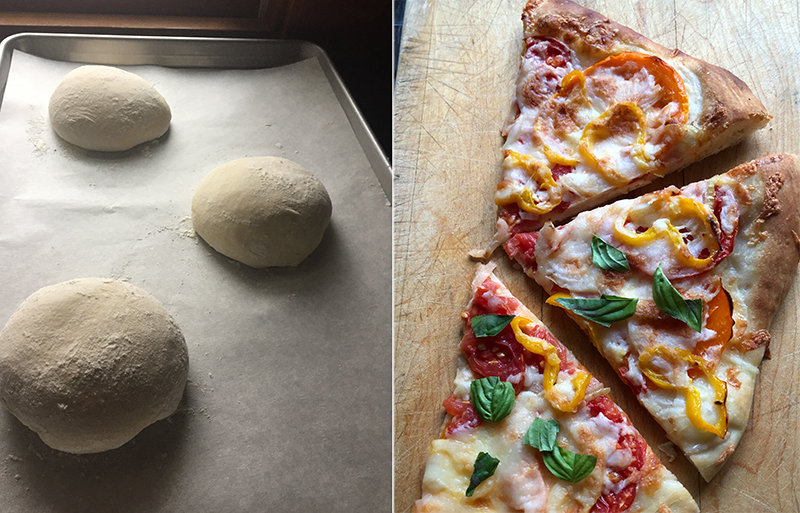
Photo by debslunch
Make-ahead pizza dough and topping suggestions
With a little planning ahead, you can have homemade pizza on a homemade crust on a weeknight! This recipe makes enough dough for three 10-12 inch thin pizzas. I often top and cook two to eat right away and partially bake the third to freeze, top, and cook another day. And if you don’t have time to make the dough, Tipi veggies are so delicious they will improve even store-bought crust.
Takes 15 minutes to mix the dough, plus overnight to rise in the refrigerator
Makes crust for three 10-12 inch thin pizzas.
1 1/4 cups lukewarm water (about 80°)
1 teaspoon active dry yeast
1 tablespoon olive oil
1 teaspoon fine sea salt
3 to 3 1/2 cups flour – bread flour if you have it, or unbleached white, or use up to one cup whole wheat
- Pour the water into a large mixing bowl, preferably the bowl of a stand mixer, if you have one. Sprinkle in the yeast and leave for about 10 minutes. The yeast should bubble; if not you might want to start over with fresher yeast.
- Add the salt, olive oil, and 3 cups flour. Mix with the paddle attachment until you have a soft dough that’s pulling away from the sides of the bowl. If it doesn’t, add the additional flour, up to 1/2 a cup – you want a soft but not too sticky dough. When all the flour is incorporated, let the mixer knead the dough for you, on medium speed for about 4 minutes. I continue with the paddle for kneading, but if you have a dough hook for your mixer, by all means switch. Alternatively, mix in the flour with a large wooden spoon, then turn out onto a floured surface and knead by hand for about 8 minutes, until smooth and elastic.
- Line a large baking sheet with parchment paper, and sprinkle it with flour. Turn the dough out onto a well floured surface – if you are kneading by hand it will already be there – and divide it into three equal portions. Form each portion into a ball, and flour it – I like to drop the ball right into my flour canister – and arrange the balls on the baking sheet. Cover with a lid or a damp towel or a large plastic bag, and refrigerate for 8 hours or up to two days.
- When you ready to make pizza, oil your pizza pans with olive oil, or line with parchment. Heat the oven to 450°. Remove the dough from the fridge, and roll one piece out on floured surface until it’s about the size of your pan. You can get fancy and spin it in the air if you like! Transfer the dough to the pan, pour about a teaspoon of olive oil on it and continue stretching to the sides of your pan. Don’t worry if you can’t get it all the way to the edge at this point – let it relax and rise while you prepare the toppings and do a final stretch right before topping. Repeat with the other dough pieces.
- Top the crust and bake for 15-20 minutes until brown and bubbling. See below for topping suggestions.
Topping suggestions:
- The pizza shown uses ingredients from this week’s box, sliced tomatoes and frying peppers and purple onion, with a mix of grated provolone and mozzarella cheese – about 1 1/2 cups grated cheese. Put a layer of cheese on the bottom crust, add the vegetables, brush with olive oil, and then top with a little more cheese. You could also add sliced or minced fresh garlic.
- Also suggested by this week’s box is roasted squash, caramelized onion, and goat cheese, although the squash this week might be a bit difficult to peel and cut into cubes to roast – this works better with butternut or delicata. Here’s a recipe for roasted delicata squash, prosciutto, and goat cheese pizza.
- Red sauce (see recipe below), sausage, and peppers. You’ll need about 1/4 pound Italian sausage per pizza, either bulk or one link, casing removed, and about one large pepper. I suggest pre-cooking the sausage, and adding the sliced pepper – and throw in some fennel seeds and extra garlic!
Red sauce for pizza
2 pounds peeled and seeded tomatoes, plum preferred
1 large red bell pepper, roasted
2 (or more!) cloves of garlic
1 teaspoon dried oregano, or Penzey’s Frozen Pizza Seasoning, or two tablespoons chopped fresh basil – stirred in after cooking
large pinch of kosher salt
a shake of red pepper flakes
1-2 tablespoons tomato paste
Combine the tomatoes, roasted pepper, and garlic in a food processor, and puree until smooth. Pour into a wide deep skillet over medium heat, and add the dried herbs, salt, and red pepper flakes. Cook for 40-45 minutes, until thickens and the garlic doesn’t smell – or taste – raw any longer. Stir in the tomato paste, and fresh basil if using. Can be frozen.
.
.

Photo by Linda Xiao for The New York Times
Coconut-Poached Fish With Bok Choy
By Colu Henry in The New York Times.
From Colu Henry: “This one pot, Thai-influenced dish couldn’t be easier to assemble, and its beautiful presentation makes it look like you spent a lot longer on dinner than you actually did. The poaching liquid does double duty by gently cooking the fish and wilting the bok choy.”
Substitute torn basil leaves for the cilantro.
.
.
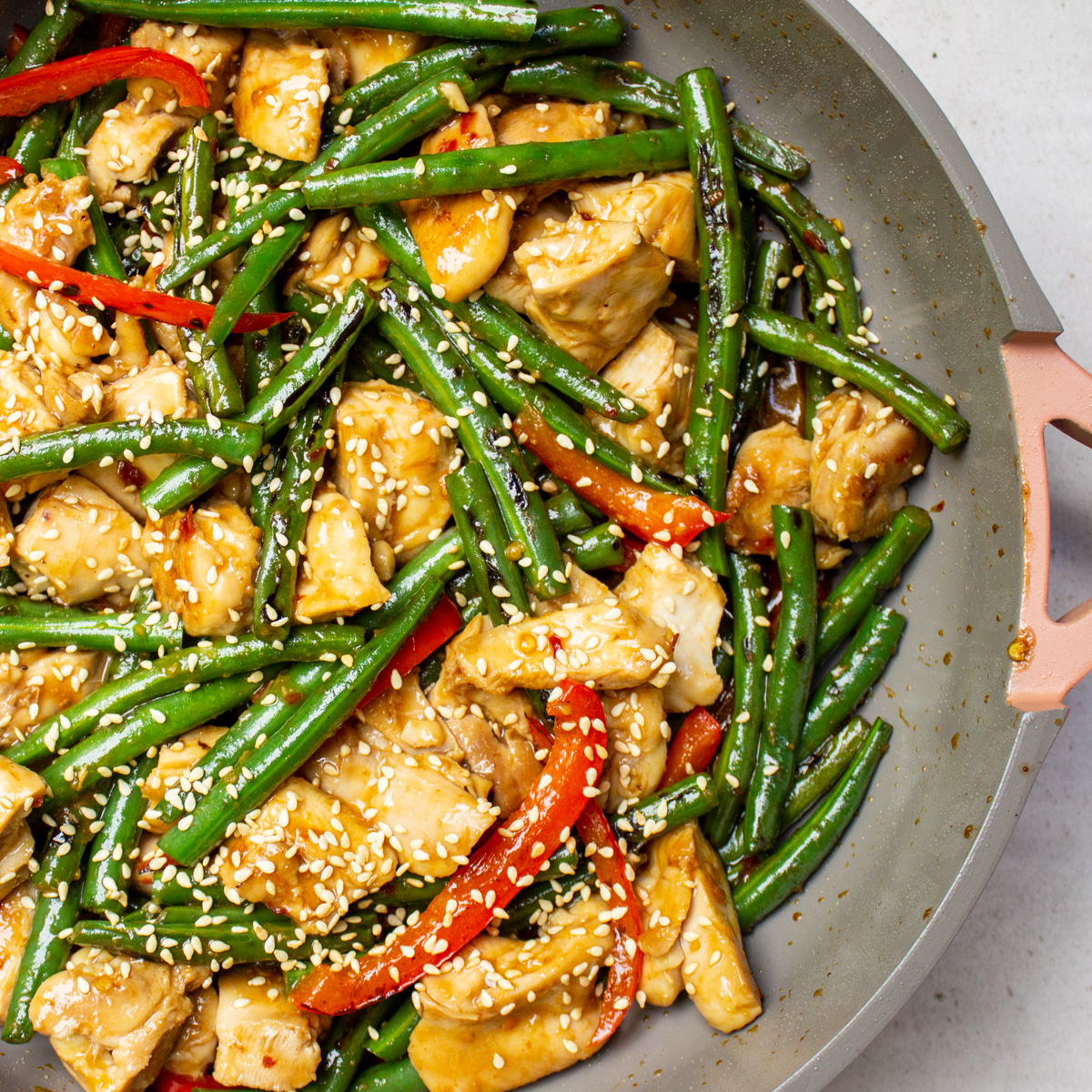
Simple Chicken and Green Bean Stir Fry
From Two Kooks In The Kitchen
This recipe includes a stir fry trick I had not tried before – tossing the chicken with a small amount of mayonnaise before frying, to keep it from sticking. It works great! You can also make this recipe with the Bok Choy or Koji greens in this week’s box, and include the optional pepper.
.
.

Sausage Stuffed Acorn Squash
From Well-Plated by Erin
Feel free to omit the mushrooms in the recipe, and sub in basil for the fresh thyme – or use dried.
.
.
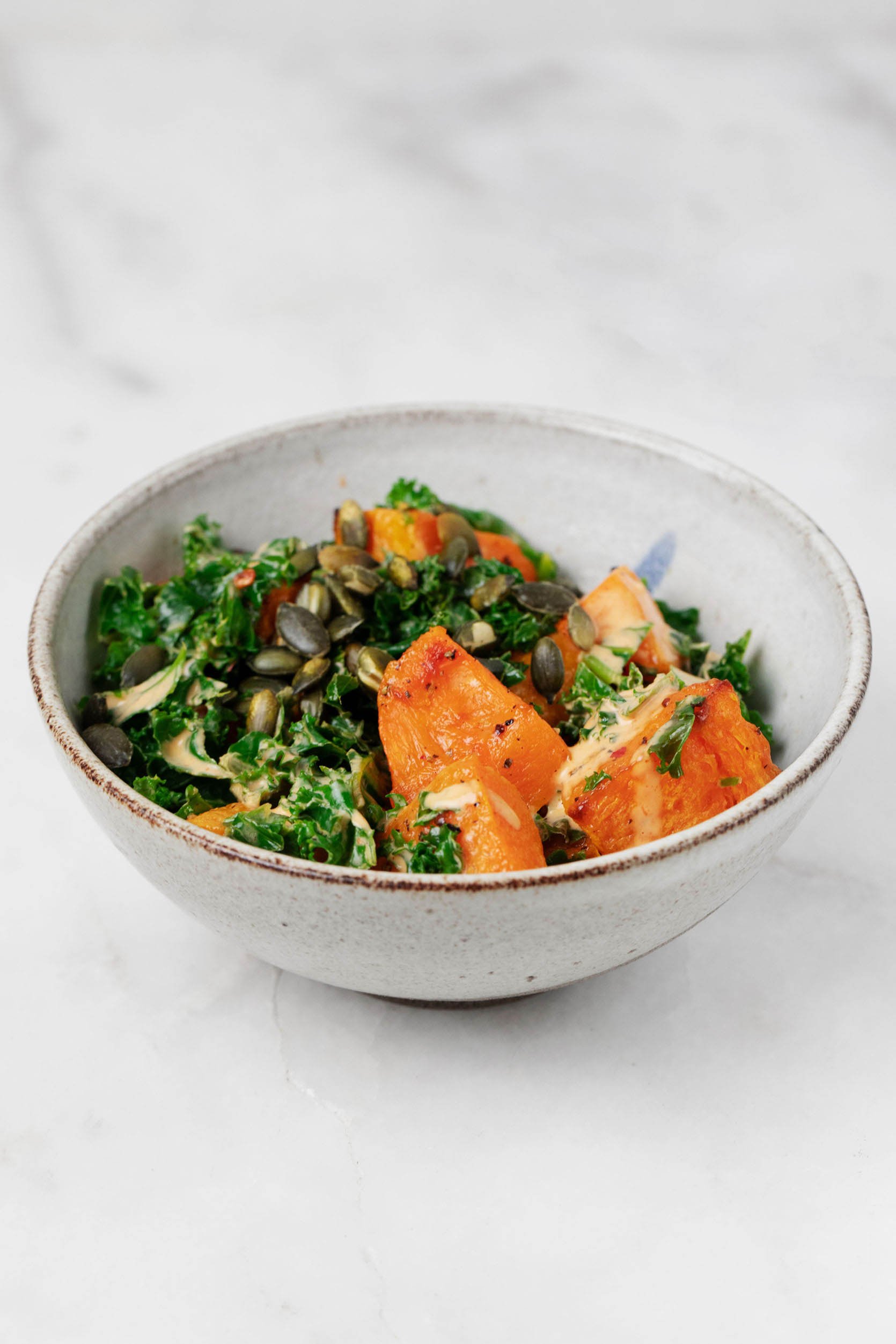
Photo by Gena Hamshaw
Warm Winter Squash Bowl
From The Full Helping
Bok Choy or Koji greens can replace the kale in this recipe, and if it’s too hard to peel the squash, you can roast it in the shell and scoop the cooked squash into your bowl.
.
.

Photo by Rebecca Katz
Tricolor Pepper Salsa with Cherry Tomatoes
From REBECCAKATZ.COM
This recipe makes a small batch of fresh salsa with basil, peppers, and cherry tomatoes. It only calls for six cherry tomatoes – you might want to throw in a few more! If you don’t have parsley, use more basil.
.
.
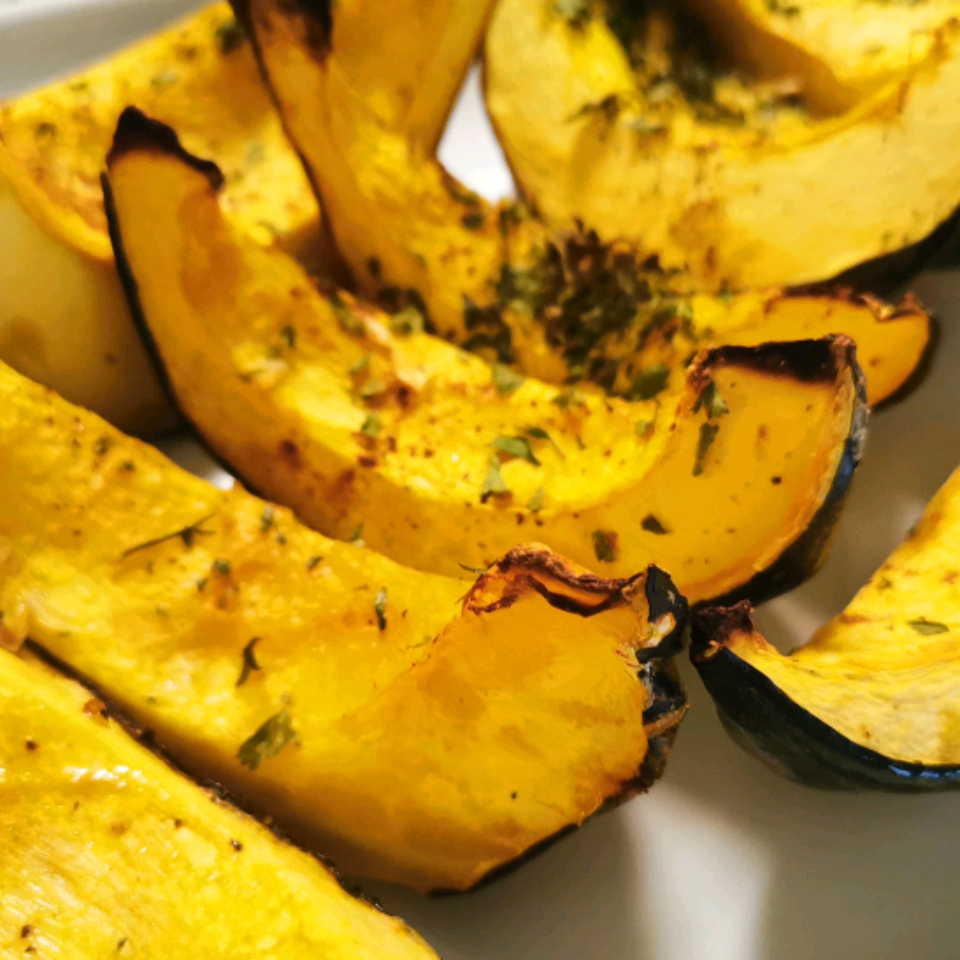
Parmesan Roasted Acorn Squash
From Allrecipes.com
Rather than roasting the squash with the more customary sweet glaze, this recipe goes to the savory side, roasting the squash with Parmesan cheese and olive oil.



